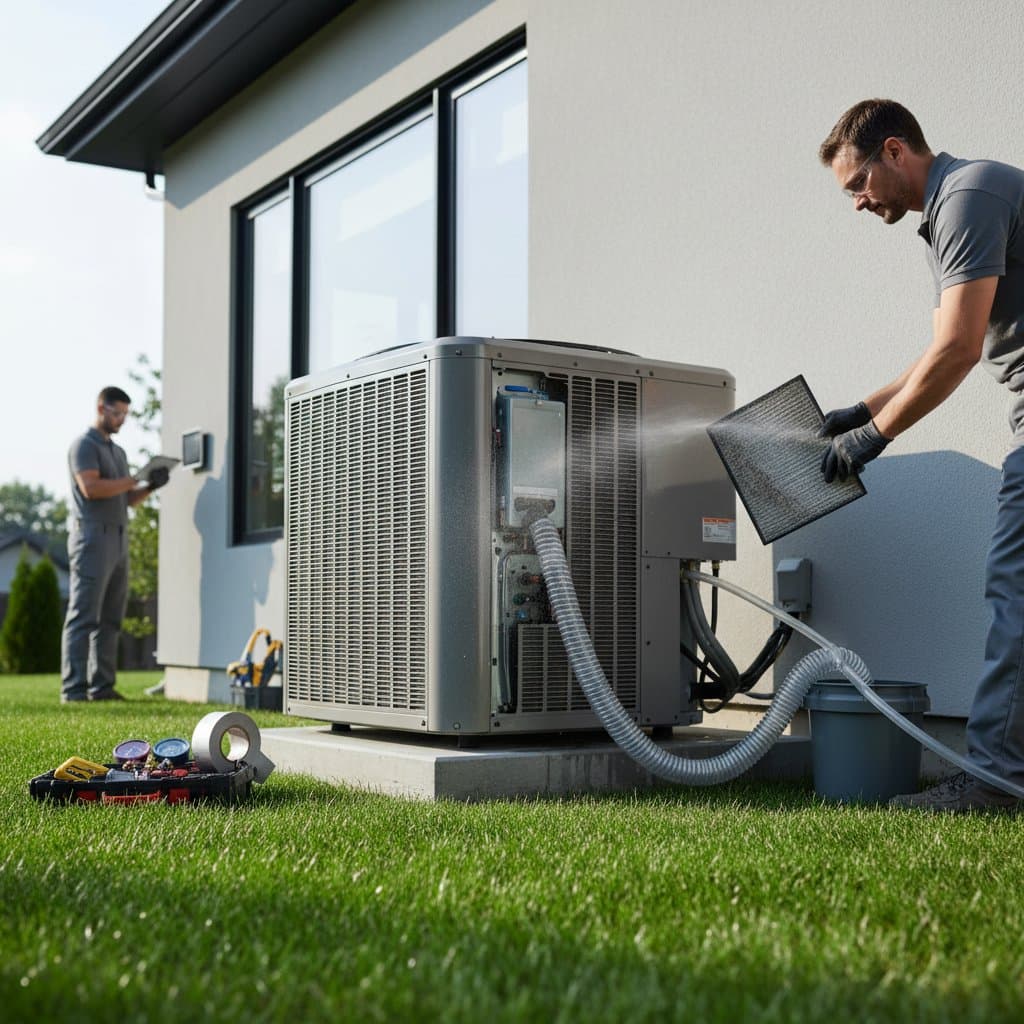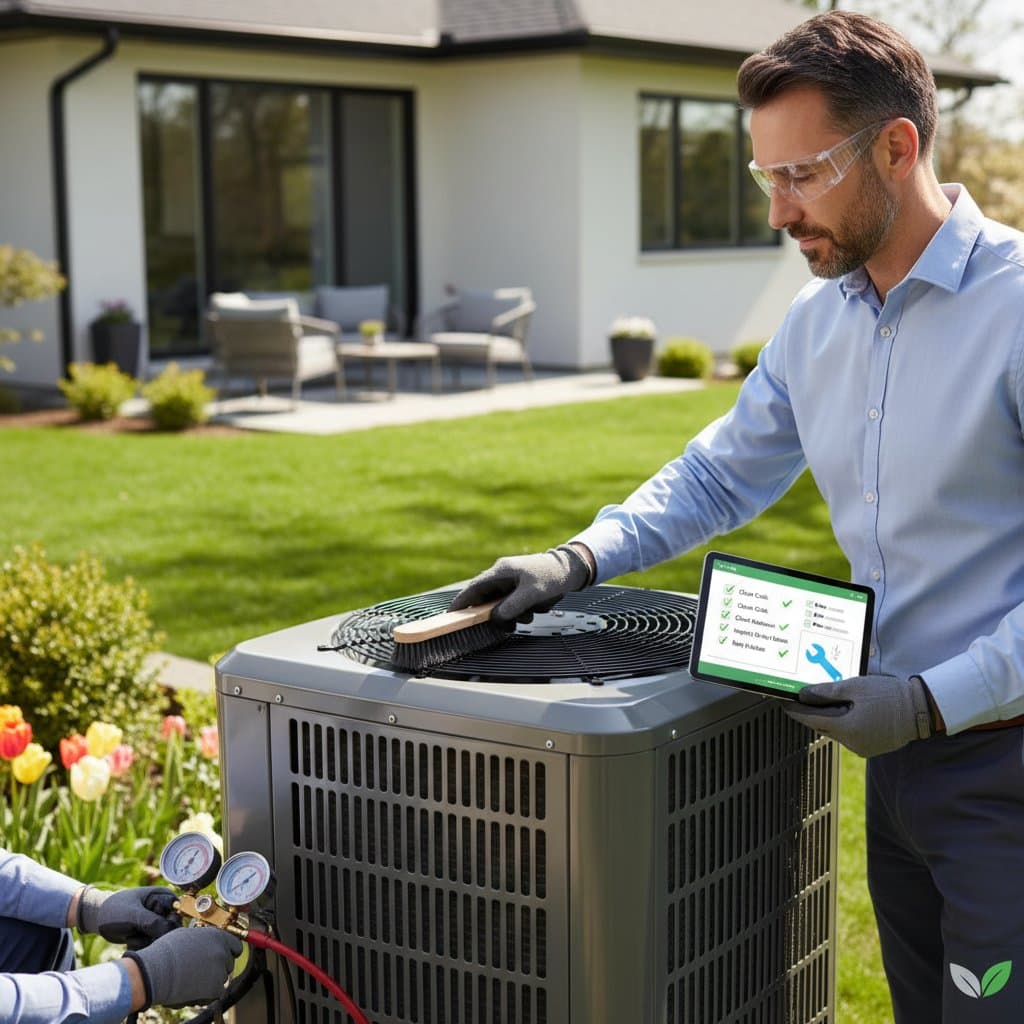Prepare Your AC for Summer: Reduce Cooling Costs by 15 Percent
Summer heat transforms your air conditioner into an essential ally against discomfort and rising expenses. Proactive preparation shields your system from breakdowns, stabilizes energy use, and prolongs its service life. Homeowners who delay maintenance until temperatures soar often face diminished performance or total shutdowns. Invest a few hours now to secure reliable cooling, financial savings, and uninterrupted comfort throughout the season.
Benefits of Seasonal AC Preparation
Preventive care stands as the most reliable method to sidestep expensive failures. A maintained system operates with minimal resistance, consumes less power, and distributes cool air uniformly. Dirt accumulation alone can diminish efficiency by up to 20 percent, accelerating component degradation and inflating utility statements.
Experts note that consistent upkeep can trim cooling expenses by approximately 15 percent. This savings often offsets the price of a professional inspection over a single season. Beyond cost control, routine checks avert severe issues like refrigerant escapes or coil failures that demand substantial fixes.
Step 1: Clean or Replace the Air Filter
Start with the air filter, a foundational element for system health. A blocked filter compels the unit to labor excessively, straining the blower motor and curbing airflow. Swap out disposable filters monthly during peak operation, or rinse reusable versions more frequently in pet-heavy or dusty environments.
Select filters with an appropriate MERV rating to balance particle capture and air passage. An excessively high rating hampers flow, while a low one permits contaminants to circulate. This simple action restores optimal performance and eases the load on your equipment.
Step 2: Clear Debris from the Outdoor Unit
The exterior condenser relies on clear surroundings to dissipate heat efficiently. Inspect and remove accumulated leaves, grass clippings, or soil encircling the base. Maintain a two-foot clearance by pruning nearby shrubs or plants.
Gently sweep the fins with a soft brush or vacuum attachment to dislodge surface grime, avoiding any bending of the delicate structures. For thorough rinsing, employ a garden hose on a low-pressure setting. Steer clear of high-pressure tools that might dent coils and impair heat exchange.
Step 3: Inspect and Clean the Condensate Drain
Condensate drains manage excess moisture generated during cooling cycles. Blockages lead to water accumulation, potential indoor flooding, or microbial proliferation within the unit. Introduce a vinegar-water mixture into the line to break down residues and inhibit bacterial growth.
Verify the drain's outdoor outlet flows unobstructed. Address any pooled water or visible buildup using a wet-dry vacuum or slender brush. Regular attention here prevents humidity-related complications and safeguards indoor air quality.
Step 4: Examine and Straighten Coil Fins
Damaged fins on evaporator or condenser coils obstruct airflow and hinder heat transfer. Acquire a fin comb from a hardware supplier to realign bent sections methodically. Match the comb's teeth to the fin spacing for precise restoration.
This adjustment enhances thermal efficiency and promotes even temperature control room to room. Neglected fins contribute to uneven cooling and heightened energy demands, underscoring the value of this targeted maintenance.
Step 5: Seal Duct Leaks and Optimize Airflow
Ductwork imperfections can squander up to 30 percent of cooled air en route to living spaces. Survey accessible ducts in attics, basements, or crawlspaces for separations, tears, or deteriorated seals. Apply mastic sealant or aluminum foil tape to mend vulnerabilities securely.
Incorporate foam board or sleeve insulation around exposed sections to minimize thermal loss. These measures not only conserve energy but also alleviate strain on the blower, fostering balanced distribution and heightened comfort.
Step 6: Verify Thermostat Precision
Thermostat inaccuracies prompt erratic cycling, either overworking the system or underdelivering coolness. Position a trusted thermometer adjacent to the device and note any discrepancies exceeding two degrees Fahrenheit. Recalibrate as necessary or replace outdated models with programmable alternatives.
Smart thermostats enable automated adjustments based on occupancy and schedules, potentially reducing energy use by 10 percent. Accurate control ensures precise temperature maintenance without excess runtime.
Step 7: Inspect Electrical Connections
Faulty electrical elements pose risks of interruptions or hazards. De-energize the unit at the circuit breaker prior to examination. Scan for loose connections, insulation wear, burn indications, or capacitor bloating.
Professional intervention becomes essential for any anomalies to avert shocks or escalations. This precaution upholds system integrity and personal safety during operation.
Step 8: Lubricate Mechanical Components
Friction in motors, fans, and bearings accelerates wear and generates excess heat. Consult your unit's manual to identify lubrication points, as modern designs may feature sealed, maintenance-free parts. Apply manufacturer-specified oil sparingly to designated ports.
Adequate lubrication minimizes resistance, quiets operation, and extends component longevity. Overlooking this step invites premature failures and diminished reliability.
DIY Limits and Professional Guidance
Homeowners manage filter swaps, exterior cleanings, and basic thermostat verifications with ease. However, refrigerant management, electrical diagnostics, and intricate coil servicing demand certified expertise. Technicians assess pressures, efficiency metrics, and latent defects comprehensively.
Annual professional tune-ups, ideally pre-season, secure warranties and expedite responses during surges. Many providers bundle bi-annual visits at reduced rates, delivering thorough evaluations and adjustments.
Budgeting for Long-Term Savings
Preventive strategies yield substantial returns compared to reactive repairs. Compressor overhauls exceed thousands of dollars, whereas standard servicing remains affordable. Allocate a modest annual fund to normalize costs and eliminate unforeseen burdens.
Explore utility rebates for maintenance adherence or efficiency upgrades, which further amortize investments. This forward-thinking approach sustains fiscal health alongside system vitality.
Essential Safety Protocols
Disconnect power sources before accessing internals to mitigate electrocution risks. Don protective gloves and goggles when manipulating sharp edges or solutions. Direct water streams away from wiring to prevent shorts.
Refrigerant systems require specialized handling; tampering invites toxic exposure or legal issues. Immediate shutdown and expert summons follow any odor of combustion or visible sparks.
Recommended Tools and Supplies
Equip yourself with these essentials for efficient preparation:
- Assorted screwdrivers and nut drivers
- Hose equipped with a mild spray nozzle
- Fin straightening comb and nylon brush
- Shop vacuum for wet and dry debris
- Metal-backed tape and duct mastic
- Digital thermometer for accuracy tests
- Diluted vinegar for drain treatment
Store them accessibly to streamline future sessions and enhance preparedness.
Strategies for Ongoing Effectiveness
Establish seasonal reminders to execute your routine systematically. Document interventions like filter renewals in a maintenance journal. Promptly investigate anomalies such as odd sounds, weak drafts, or temperature variances.
Integrate professional spring inspections for validation and optimization. These habits fortify resilience against seasonal demands.
Securing Comfort and Efficiency Year-Round
Diligent AC stewardship preserves your home's climate control and fiscal equilibrium. From filter vigilance to drain clearance, each measure advances seamless function and cost containment. A primed system delivers swift relief, subdued noise, and enduring dependability, rewarding your efforts with sustained value.





